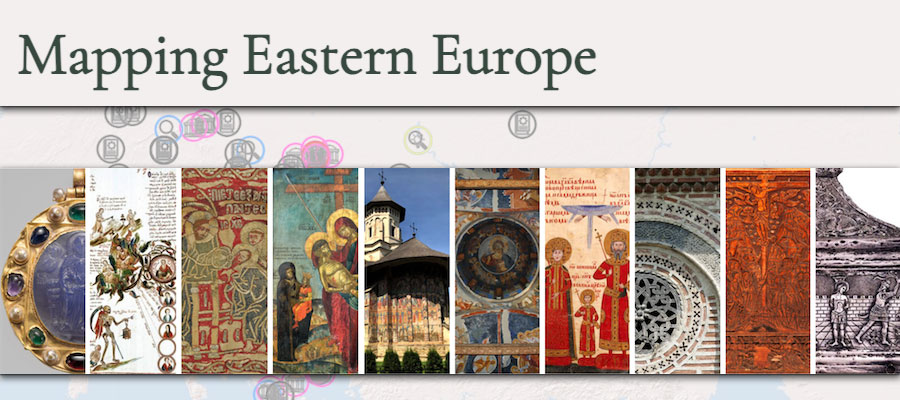Mapping Eastern Europe is a digital platform intended to promote study, research, and teaching about the history, art, and culture of Eastern Europe between the 13th and 17th centuries among students, teachers, scholars, and the wider public.
Users can access content written by specialists in the form of historical and thematic overviews, art historical case studies and videos, short notices about ongoing research projects, and reviews of recent books and exhibitions. The historical overviews offer concise accounts of key regions of Eastern Europe and their interactions with neighbors during the period in question, offering historical details related to political, economic, military, social, and religious matters that would supplement the material presented on the site. The thematic overviews explore topics and themes related to theology, liturgy, iconographies, key historical figures and events, etc., creating connections between different regions across Eastern Europe and offering a comparative approach. The case studies and videos focus on the visual and material culture of the regions set against the backdrop of the historical context, and also introduce methodological and theoretical questions that could be pursued further in classes, teaching, or research. The ongoing projects allow scholars to present and disseminate in brief their ideas and work. Finally, the reviews of recent books and exhibitions enable readers to learn more about current scholarship and exhibitions that may not be easily accessible otherwise. The content on the site is regularly updated with new scholarship and contributions.
Mapping Eastern Europe aims to make the material evidence known and accessible, and thereby help expand the temporal and geographic parameters of the study of medieval, early modern, Byzantine, and post-Byzantine art, architecture, and visual culture. The project stems from the North of Byzantium initiative, which probes the history, art, and culture of the northern frontiers of the Byzantine Empire in Eastern Europe between the thirteenth and seventeenth centuries.
Learn More & Explore